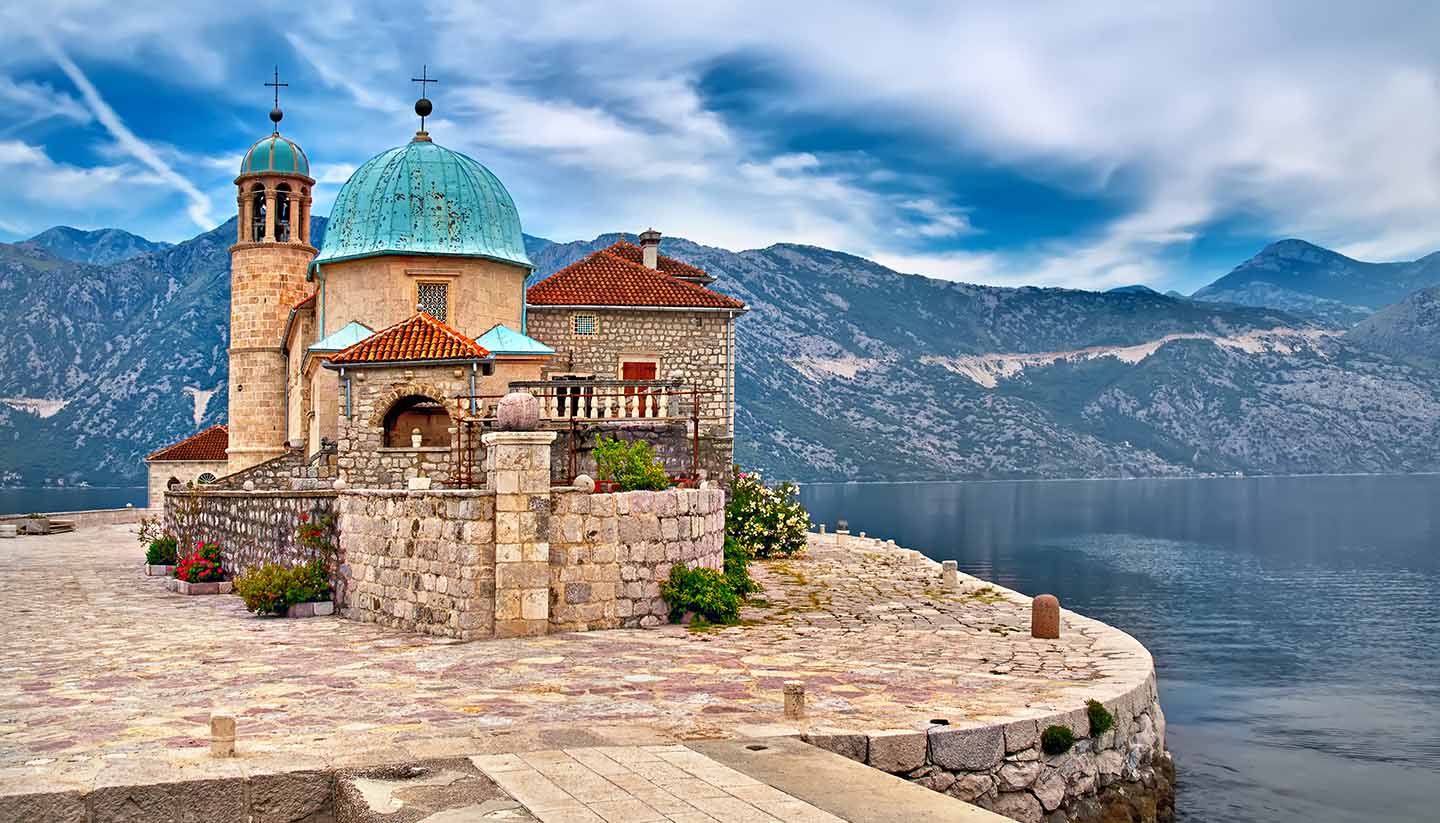Montenegro Weather, climate and geography
Weather and climate
Best time to visit
Montenegro has a Mediterranean climate along its Adriatic coast, with hot, dry summers and mild, wet winters. Inland and in the mountainous regions, the climate is more continental, with cold winters and mild summers.
Spring (March to May): Wildflowers bloom, and the countryside is lush and green, making it an excellent time for outdoor activities and sightseeing. The coast warms up to 15-25°C (59-77°F) in April, while mountain regions see daytime temperatures between 5-15°C (41-59°F).
Summer (June to August): The coastal areas enjoy temperatures around 25-30°C (77-86°F), ideal for beach holidays. Accordingly, visitors should also expect larger crowds and higher prices. The mountains offer a cooler retreat, with temperatures ranging from 15-25°C (59-77°F), perfect for hiking and adventure sports.
Autumn (September to November): A pleasant time to visit, with fewer tourists, milder temperatures, and the vibrant autumn colours in the national parks. Coastal temperatures range from 20-25°C (68-77°F) in September, while in the mountains, daytime temperatures drop from 20°C (68°F) in September to around 0°C (32°F) by November.
Winter (December to February): The mountains receive snow, transforming Durmitor National Park and Kolašin into winter sports destinations. Daytime temperatures in the mountains range from -5 to 5°C (23-41°F), with nights dropping to -10°C (14°F) or lower. Along the coast, temperatures remain mild but wet, averaging 7-15°C (45-59°F).
Best time to visit
• For beach holidays, the peak summer months (July and August) offer the best weather but also larger crowds and higher prices.
• May, June, and September provide a good balance of pleasant weather and fewer tourists.
• For skiing and winter sports, December to February is ideal.
Required clothing
During the summer months (June to August), light, breathable clothing such as t-shirts, shorts, and dresses are ideal for the coastal areas, along with a hat, sunglasses, and sunscreen to protect against the strong sun. In the mountainous regions, it is wise to bring layers for the cooler evenings, including a light jacket or sweater.
In autumn (September to November), layers remain important, accompanied by a waterproof jacket for the occasional rain showers. Comfortable walking shoes are recommended, particularly for exploring national parks and outdoor attractions.
The winter season (December to February) calls for warm, waterproof clothing, particularly in the mountains, where thermal layers, insulated jackets, hats, gloves, and sturdy boots are essential for outdoor activities. Along the Adriatic coast, mild but wet winters mean a warm jacket, sweater, and water-resistant shoes are needed.
In spring (March to May), the weather can vary, so layered clothing is recommended. A light waterproof jacket is useful as spring showers are common. Additionally, when visiting religious sites, visitors should dress modestly, covering shoulders and knees, and carry a scarf to cover their head if required.
For those planning outdoor adventures, sturdy hiking boots, comfortable sportswear, and a daypack are practical choices. Being prepared for both seasonal weather and specific activities will ensure a comfortable and enjoyable visit to Montenegro.
Geography
Montenegro is a small but diverse country located in Southeast Europe on the Adriatic Sea. It spans just over 13,800 sq km (5,333 sq miles), yet its landscape ranges from rugged mountains to serene coastal plains. The country is bordered by Croatia, Bosnia and Herzegovina, Serbia, Kosovo, and Albania, with a picturesque coastline stretching around 295 km (183 miles).
The interior is dominated by the Dinaric Alps, including the dramatic Durmitor and Bjelasica mountain ranges, home to deep canyons, glacial lakes, and lush forests. The Tara River Canyon, the deepest in Europe, cuts through this mountainous terrain. In contrast, the coastal region boasts sandy beaches, historic towns like Kotor and Budva, and the vast Bay of Kotor, often mistaken for a fjord.
Montenegro is also rich in water resources, with Lake Skadar, the largest lake in the Balkans, forming part of its border with Albania. The country's varied geography supports a remarkable biodiversity, protected in five national parks.


